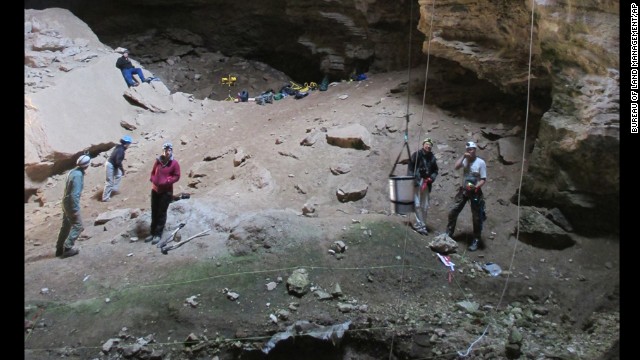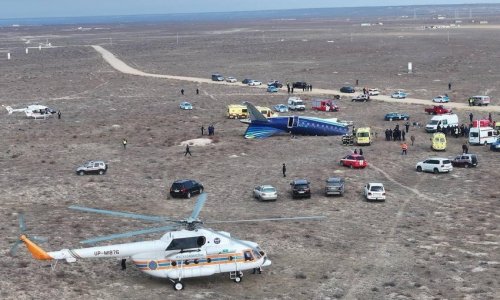The treasure trove was discovered in the Natural Trap Cave at the base of Bighorn Mountains in north-central Wyoming."We didn't know what to expect. We hadn't been there in 30 years and we didn't know what the cave would be like," Julie Meachen, a professor at Des Moines University, told CNN. She was among the scientists who rappelled down the 85-foot cave to excavate.Researchers believe these ancient animals may have fallen into what was then a sinkhole-like pit.Natural Trap Cave, part of land run by the on Bureau of Land Management, was discovered by an international team of paleontologists back in the 1970s. In past excavations, scientists have discovered the fossils of mammoths, short-faced bears, collared lemmings, and camels buried underneath layers of sediment.The cave is cool and damp -- prefect for preserving prehistoric remains, Meachen says. "It's like a refrigerator in there," she said. "Some of the bones we're finding there have collagen in them. That is where you could get the ancient DNA."The scientists saw bones falling out of a part of the cave, and decided to start digging there. "That was the fossil layer," she said. "There is so much to dig. We have two more years for funding that we can be out there, so we are going to try to dig up as much as we can." This year's excavation was funded by National Geographic.Professor Alan Cooper of Australia's University of Adelaide was also part of the excavation that began on July 29. The Bureau of Land Management in Wyoming tweeted a video of the professor discussing the fossil finds at Natural Trap Cave on Thursday, which was uploaded to Youtube."This is one of the richest sites for megafauna mammal bones in the lower 48 states and southern Canada," he said in the video. Megafauna mammals are considered to be large or giant animals, typically larger than a human.Some of the remains are believed to be of the North American lion and the American cheetah, Cooper explained in the video. Some of the species found are estimated to have gone extinct more than 20,000 years ago, according to the National Park Service."I've had this list of really puzzling evolutionary mysteries, things like the Falkland Islands wolf or the American cheetah, which we are finding bones of here, and the American lion," Copper said.Scientists are using latex gloves and breathing masks while surfacing the prehistoric remains as a way to ensure that excavators' DNA do not get onto the animal bones. Characteristics such as weight, smoothness of the surface and coloring can help scientists determine whether these prehistoric bones have genetic matter that they can test.The best preserved remains will be packed in cooler containers and transported back to universities in the United States and also the Australian Center of Ancient DNA and the University of Adelaide for testing.(CNN)Bakudaily.Az
Treasure trove of prehistoric animal remains discovered - PHOTO
World
22:45 | 12.08.2014

Treasure trove of prehistoric animal remains discovered - PHOTO
Scientists descended into a deep cave, hoping to find Ice Age mammals' remains. What they found stunned them: the remains of hundreds of big prehistoric mammals.
Follow us !










